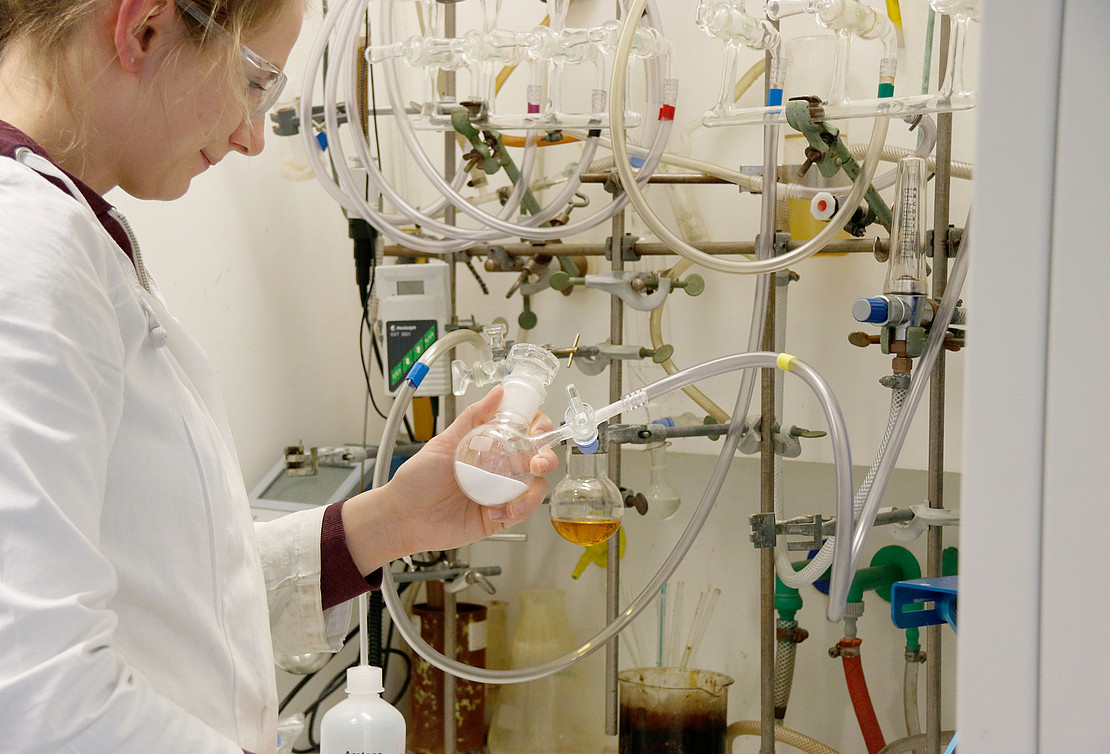This page contains automatically translated content.
Respiratory poison becomes antibiotic: Kassel chemists convert carbon monoxide into useful substance
 Image: University of Kassel.
Image: University of Kassel.Carbon monoxide is known as a deadly respiratory poison. At the same time, however, it is also an important building block for the chemical industry. Carbon monoxide is the basis for numerous medical and other products. "If you want to use it as a so-called synthesis building block to make products, you usually have to use harsh methods," says Prof. Dr. Ulrich Siemeling of the Department of Organometallic Chemistry at the University of Kassel. "So high pressure and high temperature." Or you have to use rare and toxic heavy metals, the chemist said. The carbon monoxide (CO) molecule is held together by the strongest known chemical bond, he said, and is therefore inert.
The team of researchers at the University of Kassel has found that carbon monoxide can also be harnessed under simple conditions. "It just depends on the reaction partner!" says Prof. Siemeling. The scientists used so-called "acyclic diaminocarbenes" for this purpose. These carbenes reacted easily with carbon monoxide and made it usable. Without any heavy metals at all.
"We opened the door for the search for future antibiotics."
Carbenes are compounds of divalent carbon. Carbon has four bonding electrons and is therefore usually tetravalent and quadrivalent. Carbenes are different: Here, two of the four bonding electrons are unused. Therefore, carbenes are particularly reactive and often cannot be isolated in substance. Among the carbenes was a new representative specially developed by the researchers with particularly advantageous properties: highly reactive to CO, but at the same time particularly heat-resistant and thus convenient to handle.
"The products of the reaction of carbon monoxide with the carbenes used by the Kassel research team belong to a substance class from which many important antibiotics are recruited," Siemeling said. The synthesized substances showed an antibacterial effect, similar to antibiotics. "Unfortunately, the substances we have synthesized so far are not suitable for medical purposes. But with our new synthesis method, we've opened a door for those dedicated to finding future antibiotics." Resistance to many antibiotics already exists today, he said. Their effectiveness is weakening. "Our research could enable new antibiotics that are more effective than established ones, which threaten to become a blunt weapon in the face of increasing resistance," says the Kassel chemist. "In one go from a deadly respiratory toxin to an antibiotic - so that's how the study could be summed up succinctly."
The project was carried out jointly with scientists from Bochum and Frankfurt and funded with 528,000 euros from the German Research Foundation.
The study was published in "Chemistry - A European Journal."
It can be found here: https://onlinelibrary.wiley.com/doi/10.1002/chem.201805307
Contact:
Prof. Dr. Ulrich Siemeling
University of Kassel
Department of Organometallic Chemistry
Phone +49 561 804-4576/4277
E-mail: siemeling@uni-kassel.de